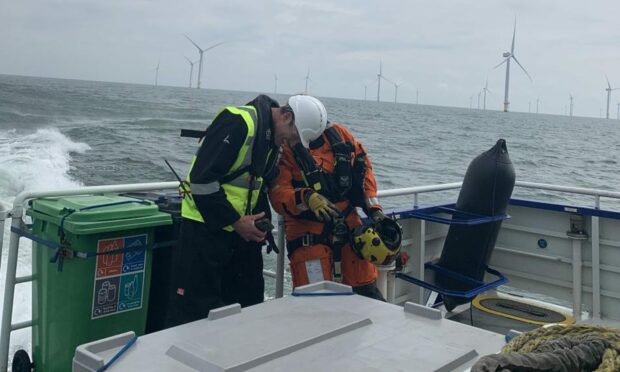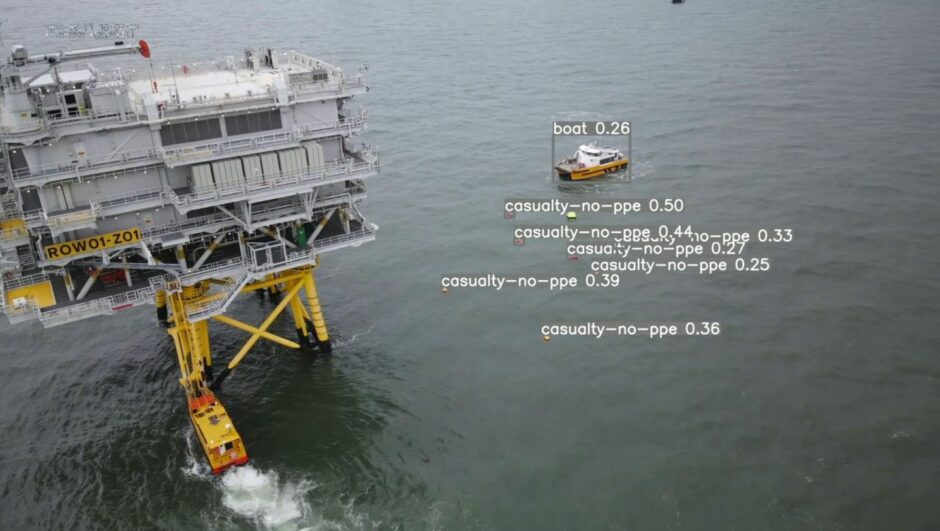Life-saving drone technology developed in Scotland has undergone trials in the next step towards its planned roll-out in the fast-growing offshore wind energy sector.
It is claimed the unmanned seagoing drones can drastically cut the time it takes to reach people in the sea.
The firm behind them, Edinburgh-based Zelim, recently showed off the “two-step” recovery system to the offshore wind industry.
As the number of offshore wind farms increases and their locations move further from shore, there is a clear need for solutions such as Zelim’s to ensure safety is never compromised.”
Andrew Macdonald, ORE Catapult.
Zelim’s artificial intelligence-based casualty detection system, SARBox, was designed to detect and track multiple people in the water in all weather conditions.
Once discovered, casualties are speedily recovered by Zelim’s Swift Rescue Conveyor system.
The development of SARBox and Swift was supported by the Offshore Renewable Energy (ORE) Catapult and Offshore Wind Growth Partnership.
Fantastic to see Zelim successfully demonstrate its two-step recovery system to the #offshorewind industry. The company’s real time AI-based casualty detection system – SARBox – has been developed with support of the team from Catapult.
Full story: https://t.co/IwylG0lwXB
— ORE Catapult (@ORECatapult) June 20, 2022
Andrew Macdonald, director of offshore wind development and operations, ORE Catapult, said: “Innovation faces challenges at every stage from concept through to development and commercialisation.
“The team at Zelim have a passion for improving offshore safety and this has helped them build a strong ecosystem of partners and advisors that provide credibility and experience as they commercialise their products.
“As the number of offshore wind farms increases and their locations move further from shore, there is a clear need for solutions such as Zelim’s to ensure safety is never compromised.”
Zelim chief executive Sam Mayall said: “Although still rare, accidents do occur offshore.
“During a person overboard incident, the sooner you can get someone out of the water the better.
“The difference between 30 seconds and five minutes could be life or death. Our SARBox is cutting out the search element of ‘search and rescue’ and the Swift Rescue Conveyor is getting people out of the water quicker, while decreasing the risk of injury during the rescue.”
SARBox was demonstrated for the first time in Project Sancho, a live international exercise at Orsted’s Race Bank development, off the Norfolk coast, to assess the offshore wind industry’s emergency response capability.
The technology identified and tracked multiple casualties during the exercise, which involved the Maritime Coastguard Agency, US Coast Guard, the RNLI, police and offshore wind farm operators.
Half-minute recovery
The Swift Rescue Conveyor also recently completed ‘rough weather trials’, where it tackled wind speeds of 46mph and 10ft high waves – recovering casualties from the water 30 seconds from first point of contact.
Offshore wind vessels using current overboard recovery systems took more than five minutes from first contact.
Swift will be formally launched at a commercial marine exhibition, Seawork22, in Southampton on Wednesday.



Conversation